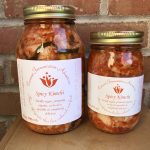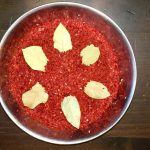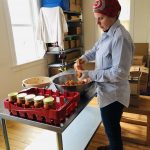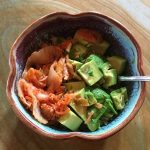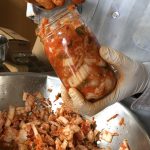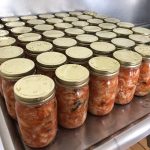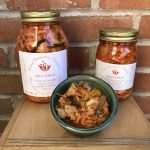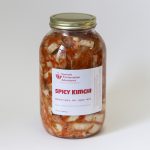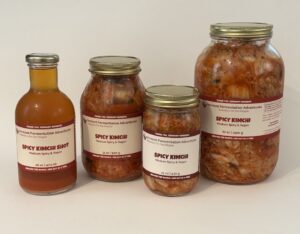 Do you like the idea of kimchi but don’t like anything too spicy? Have you had a whiff of kimchi from your companion’s plate and wondered if something died in that direction? Of course, I am biased, and I wonder if VFA’s Spicy Kimchi might be just right for you. It is spicy, but we aim for medium in terms of heat and maximum in terms of flavor. It is also vegan. Don’t get me wrong– I love me some fishy, shrimpy, stinky kimchi, but this isn’t it. Garlicky, gingery, loaded with roots, and balanced with paprika (a trick I learned from my friend, Saida, who taught me to make kimchi), this kimchi is delicious, approachable and a great companion to any dish. Read more about Saida and her kimchi making lessons below in the “More Kimchi Info” tab.
Do you like the idea of kimchi but don’t like anything too spicy? Have you had a whiff of kimchi from your companion’s plate and wondered if something died in that direction? Of course, I am biased, and I wonder if VFA’s Spicy Kimchi might be just right for you. It is spicy, but we aim for medium in terms of heat and maximum in terms of flavor. It is also vegan. Don’t get me wrong– I love me some fishy, shrimpy, stinky kimchi, but this isn’t it. Garlicky, gingery, loaded with roots, and balanced with paprika (a trick I learned from my friend, Saida, who taught me to make kimchi), this kimchi is delicious, approachable and a great companion to any dish. Read more about Saida and her kimchi making lessons below in the “More Kimchi Info” tab.
Product Details

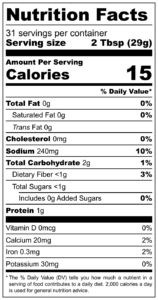
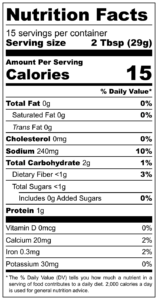
Before I met Saida, her husband Bakir and their four children, I would have said without hesitation that kimchi is a Korean condiment. And it is. My first taste of it came from Pacific Rim in Burlington and their wonderful Korean food lunches. But kimchi is popular around the world, and it seems to be especially popular in Eastern Europe and Russia. Go figure! The Asian influences throughout Russia are strong, and therefore, it is not really that unusual that I learned to make kimchi from Saida, who fled to the US from Russia with her family.
They are Meskhetian Turks, and have been persecuted and displaced throughout history. The Vermont Refugee Resettlement Project identified several extended families in the early 2000’s and helped them move to Vermont. We were lucky enough to host Saida and her family for about two weeks after they arrived to the US. They and their extended family in Vermont became our close friends.
After they moved into their own apartment, I would stop by to visit, and they always brought out delicious homemade bread and “chimchi” for a snack. I grew to love it so much that one day, Saida reneged and taught me to make it—meaning, she came to my house and made it and I tried to stay out of her way. And yet, I persisted, and she eventually let me do some salting and spicing and tending the jars until I could finally make it on my own. I did not know this was fermentation or that it offered any possible health benefits. I only knew that it was delicious and that my family, friends and I couldn’t seem to get enough of it.
I learned later that chimchi was basically the same wonderful fermented food as is kimchi, and that fermented foods were important to incorporate into our diets in order to live into our best health. Thus, a fermenting fanatic, follower or Sandor Katz, fermenter of anything that wasn’t nailed down was born. That’s me, by the way, in case you are wondering.
Saida and her family eventually left Vermont, moving toward more affordable living and warmer climates. The debt of gratitude I owe her for starting me on this path of fermentation fervor is tremendous. We make quite a bit of kimchi in the Fermentery, and every time we chop, shred and mix, I think about wonderful Saida and send her a loving prayer of gratitude.


